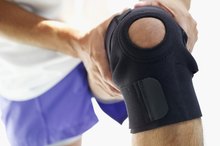What does fact checked mean?
At Healthfully, we strive to deliver objective content that is accurate and up-to-date. Our team periodically reviews articles in order to ensure content quality. The sources cited below consist of evidence from peer-reviewed journals, prominent medical organizations, academic associations, and government data.
The information contained on this site is for informational purposes only, and should not be used as a substitute for the advice of a professional health care provider. Please check with the appropriate physician regarding health questions and concerns. Although we strive to deliver accurate and up-to-date information, no guarantee to that effect is made.
Stretching is an integral part of your fitness routine. Proper flexibility and range of motion has many benefits to daily life and athletic performance 1. There are a few different types of stretching, all of which can affect heart rate differently 4. When you are able to understand how your body is reacting to your activities, you can help push yourself in the right direction to a greater extent.
The Heart: Our Lifeline
Your heart is crucial to success in fitness and health. The heart has the toughest job among all working muscles in the human body. Twenty-four hour a day, 7 days per week, 365 days per year for life, the heart must contract and relax. Your heart provides oxygen and nutrients via the blood to all parts of the body. As you push your body with greater physical demands, your heart must work harder to provide the necessary oxygen and nutrients to your working muscles to get the job done. Even at night when you are sleeping, the heart continues to work, but at a lower intensity — just enough to keep you alive and allow your body to recuperate before the next day.
- Your heart is crucial to success in fitness and health.
- As you push your body with greater physical demands, your heart must work harder to provide the necessary oxygen and nutrients to your working muscles to get the job done.
Stretching: Variety of Options
How To Stretch the Gastrocnemius & Soleus Muscles
Learn More
Stretching may come in many forms: Static stretching is performed when a stretch is felt and held for a period of time 1. During static stretching the body is relaxed. Dynamic stretching is usually performed as a warmup activity prior to workouts or athletic performance. This involves taking the muscles through their range of motion by moving in a controlled manner, rather than holding the stretch and therefore, in turn, wakes the muscles up as oppose to relaxing them. Assisted stretching or partner stretching is performed by a fitness professional on the client. This can be similar to static stretching. Additional forms of stretching are possible as well.
- Stretching may come in many forms: Static stretching is performed when a stretch is felt and held for a period of time 1.
Static Stretching and Heart Rate
Due to the relaxed nature of static stretching, the heart rate is on its way down toward resting rate 4. If the body is truly relaxed, heart rate will gradually decrease because the heart doesn't have to work as hard to supply nutrient demands throughout the body 4. Ideally when you are finished your stretching session after your workout, the heart rate should be under 100 beats per minute to ensure your body has properly cooled down and regained its rested state 14.
Dynamic Stretching and Heart Rate
Different Types of Sensual Massage Therapies
Learn More
Dynamic stretches are performed with controlled and constant movements prior to a workout or sport that will help prepare the body for the upcoming activity or event. Dynamic warmup actually continues to elevate heart rate towards the intensity the body will be facing during the activity 4. After a proper dynamic stretching session, the body should feel warm, have a light sweat and breathing rate should be increased from resting breathing rate 1. In addition, heart rate should be elevated to ensure the body is transporting the necessary oxygen and nutrients throughout the body to working muscles 4. Therefore, heart rate should be elevated, gradually, toward proper training range which can be anywhere from 50 to 90 percent of your maximum heart rate 4.
PNF or Assisted Stretching and Heart Rate
This type of stretching is always recommend to be performed by a professional to ensure safety and effectiveness 1. With this style of stretching your heart rate will remain relatively low 4. In general, heart rates will remain around resting rates which range, on average, from 72 to 80 beats per minute. PNF stretching may increase heart rate slightly due to the pushing or resisted aspect involved in part of the stretch, but the heart rate will still remain fairly constant 4.
Heart Rates Will Depend on Goal
Overall, your heart rate after stretching will depend highly upon the type of stretching you perform 4. Have a goal in mind as to what you want to achieve with your stretching session. From there, you will have a better idea as to how your heart should react in general.
Related Articles
References
- Exrx: Stretching and Flexibility
- "Canadian Physical Activity, Fitness and Lifestyle Appraisal manual"; Canadian Society of Exercise Physiology; 2003
- "ACSM's Resource Manual for Guidelines for Exercise Testing and Prescription - 3rd edition"; The American College of Sports Medicine; 1998
- Exrx: Heart Rate Tidbits
Resources
Writer Bio
Derek Arsenault began writing in 2007 for "The Shield," a local newspaper and area newsletters. He is a personal trainer and conditioning coach, specializing in sports conditioning and kids fitness. Arsenault holds a diploma in fitness and health promotion from Loyalist College.









